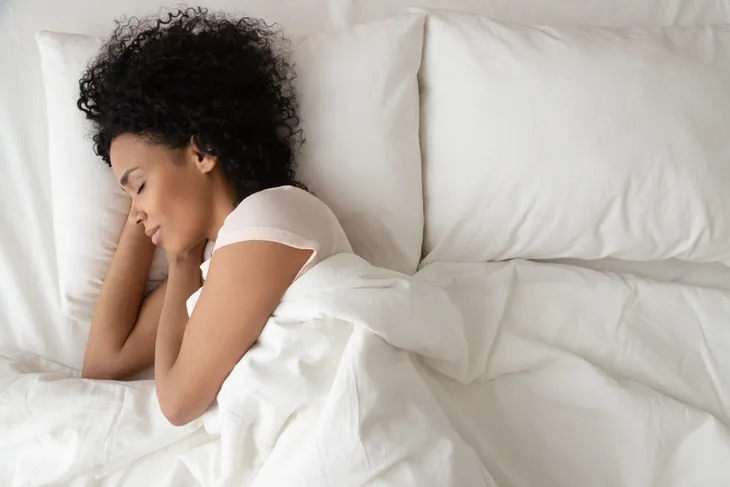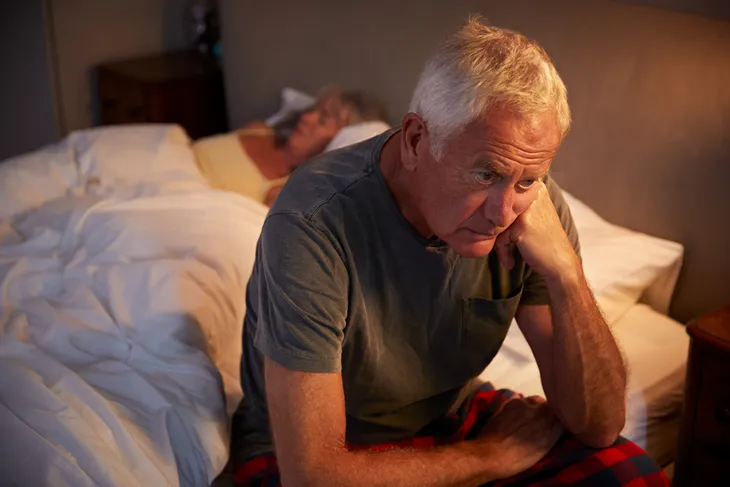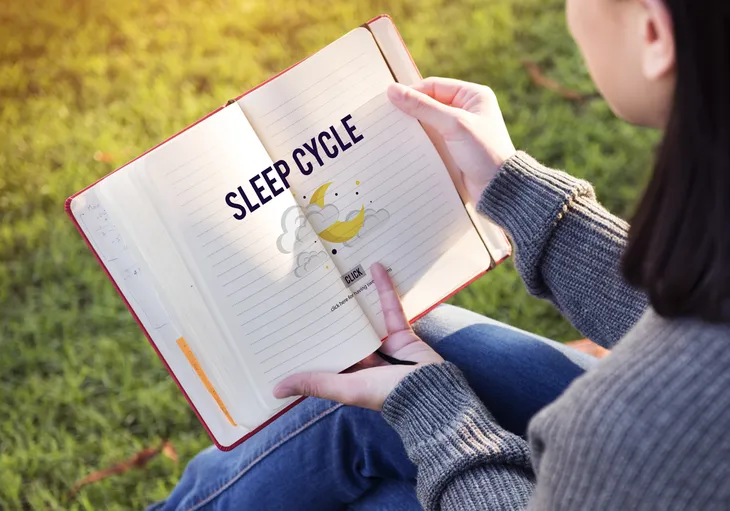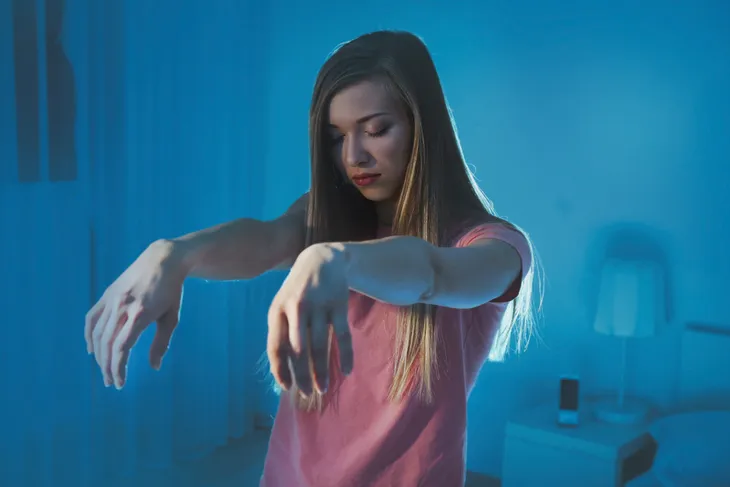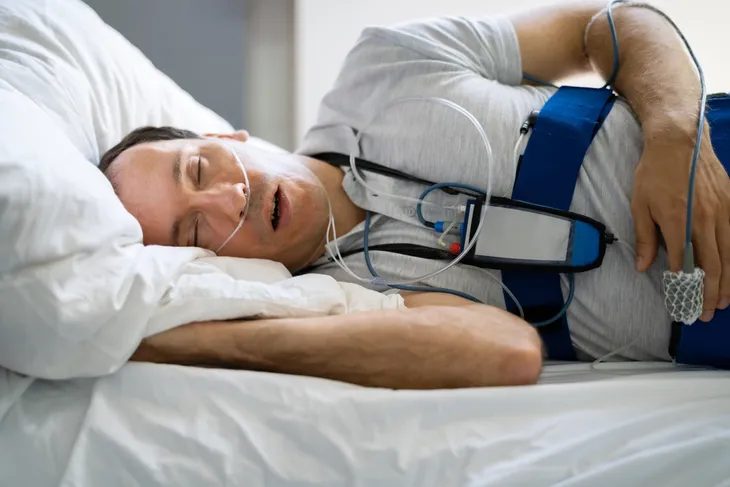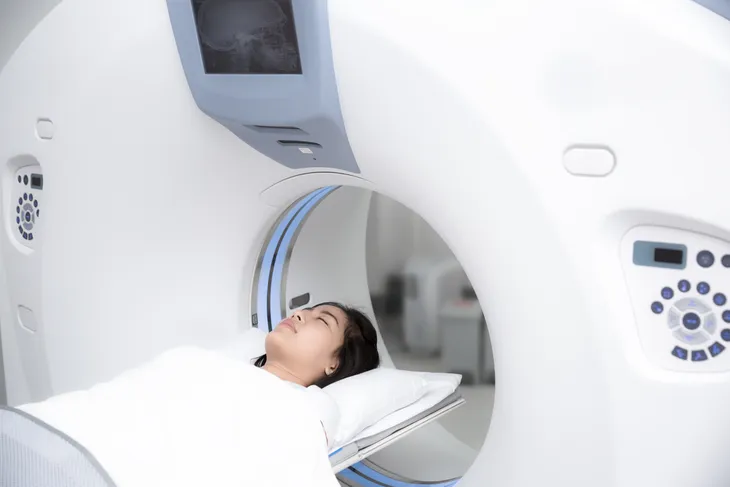- REM sleep behavior disorder occurs in people where the temporary paralysis that typically occurs during sleep doesn’t occur and they “act out” their dreams.
- Symptoms include physical movements like punching or kicking, noises (screaming or laughing), and being able to recall the dream when woken up.
- It is more likely to occur in men over the age of 50 and often a warning sign of neurodegenerative diseases, such as Parkinson’s disease.
Sleep is supposed to be a very peaceful and calm experience. Something we do to rest our body, relax, and reset before a new day. However, for people with rapid eye movement (REM) sleep behavior disorder (RBD) and those who live with them, sleep is anything but peaceful.
During normal REM sleep the body’s muscles goes into a temporary paralysis while the brain is dreaming, but for people with RBD, paralysis doesn’t occur. Instead their body and voice will act out their dreams while they remain asleep, explains the National Sleep Foundation. Here’s a closer look into everything to know about REM sleep behavior disorder…
What is REM Sleep Behavior Disorder?
While we might not always remember them, we all dream. It occurs during REM sleep. When this happens our muscles become temporarily paralyzed. But in a person with RBD, the paralysis is absent or incomplete causing the person to “act out” their dreams, explains Medical News Today. This activity can be dramatic and even violent, warns the source.
Even though it occurs during sleep, it should be taken very seriously. People with RBD are at risk of injuring themselves and others who might share their bed. Risk of injury increases depending on the nature of their dream. When the person wakes up, they will likely remember their dream but not know they were engaging in any movement, says Medical News Today.
How Common is it?
While we all have to sleep each night and some people certainly sleep more or less than others, the risk of developing RBD is relatively low. Point in case is that most people have likely never heard of RBD because it’s a relatively rare condition. According to the National Sleep Foundation it only affects between 0.5 and 1-percent of adults.
Among the few people who are affected, it’s more often men or adults over the age of 50, however the source does point out that it can occur in children from high-risk groups.
Symptoms of RBD
While the symptoms of RBD are often physical, people who have this disorder aren’t usually aware of their behavior. The Sleep Foundation states that most find out they have this disorder when they are told by others about their symptoms.
RBD causes people to physically act out their dreams. The Mayo Clinic lists the following as common symptoms of this behavior…
- Sporadic movements (i.e. kicking, punching, arm flailing, or jumping from bed during action-filled or violent dreams)
- Noises (i.e. talking, laughing, shouting, emotional outcries, or cursing)
- Being able to recall the dream if awoken during an episode
The Sleep Foundation also adds that REM sleep occurs about 90-minutes after a person falls asleep. REM sleep stages are longer in the second half of the night which means episodes of RBD are more frequent later on in a sleep period. They can occur every night or only a few times a year, but typically worsen over time.
When Does it Occur?
The National Sleep Foundation also adds that REM sleep occurs about 90-minutes after a person falls asleep. REM sleep stages are longer in the second half of the night which means episodes of RBD are more frequent later on in a sleep period.
They can occur every night with several episodes occurring in a night, or only a few times a year. “REM sleep behavior disorder can develop suddenly or gradually, but symptoms typically worsen over time,” writes the source.
Causes of RBD
The exact cause of RBD is still unknown, but may occur alongside degenerative neurological conditions such as Parkinson’s disease, multisystem atrophy, and diffuse Lewy body dementia, explains WebMD. If this is the case, it tends to occur several years before the development of these neurodegenerative diseases.
The source refers to one study which found that 38-percent of people who were diagnosed with RBD ended up developing Parkinson’s disease on average about 12 to 13 years after symptoms of their sleep disorder began. WebMD also notes that RBD is seen in about 69-percent of people with Parkinson’s disease and multisystem atrophy. This doesn’t mean every person with these diseases will develop RBD, but there may be an increased risk.
WebMD specifies that in 55-percent of cases the cause in unknown. But the other 45-percent are linked to alcohol or sedative-hypnotic withdrawal, certain antidepressants, or serotonin reuptake inhibitor use.
Who is at Risk of RBD
Any person can develop RBD, but it’s more likely to occur in men over the age of 50. The Mayo Clinic does point out that more women are being diagnosed and many are under the age of 50. Young adults and children can even develop the disorder, “particularly in association with narcolepsy, antidepressant use, or brain tumors,” writes the source.
Other risk factors are having a certain type of neurodegenerative disorder (i.e. Parkinson’s disease, multiple system atrophy, stroke, or dementia with Lewy bodies), having narcolepsy (a chronic sleep disorder that causes daytime drowsiness), or taking certain medications. The Mayo Clinic also notes that recent research has potentially found environmental or personal risk factors that can affect a person’s likelihood of developing RBD, such as pesticide exposure, farming, smoking, or a previous head injury.
Sleepwalking vs. RBD
People might equate RBD to sleepwalking because both involve people getting up and physically moving around during their sleep. But the two are completely different sleep disorders. Both involve similar movements, however according to Healthline, it’s usually much harder to wake someone up from sleepwalking than it is during an RBD episode.
People who sleepwalk are also more likely to be confused by their behavior and less likely to remember their dream. Someone with RBD will be easy to wake and remember what they were dreaming about. So how can a person tell the difference? “If you have your eyes open, walk around, leave the room, eat or drink, engage in sexual activity, or use the bathroom while sleeping, you’re probably sleepwalking,” explains the source.
Complications of RBD
The biggest potential complication of RBD is injury to yourself or a sleeping partner. According to the Sleep Foundation, depending on the environment and nature of their dream, these physical implications could even be life-threatening. “Up to 90-percent of spouses of those with REM sleep disorder report having sleep issues and over 60-percent have experienced a physical injury,” writes the source.
In addition to the physical implications, there are also mental effects that can occur. For example, a person with RBD may become socially isolated because they fear other people finding out about their disorder. It can also cause distress in sleeping partners or other people living in the home, warns the Mayo Clinic. And put a significant strain on relationships as a result of sleep disturbances.
Diagnosing RBD
RBD can be tricky for a doctor to diagnose because most of the symptoms occur during a person’s sleep. In fact, some people don’t even realize they have it until someone else alerts them to their behavior. If someone suspects they have RBD, Medical News Today explains they will have to go to a dedicated sleep center with experience dealing with RBD to receive an official, accurate diagnosis.
While at a sleep center, they may “undergo a sleep study to test for RBD or other sleep disorders, such as sleep apnea,” explains Medical News Today. “During a sleep study, the person will stay in a specialized facility throughout the night.” During this time they will be monitored closely for breathing activity, brain action, and muscle movement.
Treatment Options
The good news is that treatment for RBD is often successful. The best way to manage this condition is through medication and by adapting sleep habits, says Medical News Today. There are several different options for medication. Most work by suppressing the muscle activity and relaxing the body during sleep.
If these medications aren’t effective, the source notes that melatonin can also sometimes work to calm violent behavior during sleep. People with dementia, gait disorders, and obstructive sleep apnea should be cautious with medications and as with everyone else, always discuss these with a doctor first.
Injury Prevention
It’s incredibly important for people with RBD to establish a safe sleep environment, not only for themselves but for others. According to the Sleep Foundation, sleep-related injuries (i.e. bruising, cuts, fractures, blunt trauma, and head trauma) have been reported in 30 to 81-percent of people with RBD.
WebMD provides some tips on how to prevent injuries, which includes the following:
- Remove potentially dangerous objects from the bedroom
- Clear the floor of furniture and objects that could injury someone if they fall out of bed
- Place the mattress on the floor or a cushion around the bed
- People who leave the bed during an episode should sleep on the ground floor, if possible
- Have partners sleep in another room until their symptoms resolve
- Consider installing padded bed rails
Outlooks for RBD
This condition can be serious and will often get worse over time, but it can also be treated with medication. This form of treatment may come with some side effects. Healthline notes that people may experience some memory problems, morning sleepiness, confusion, or decreased balance. It can also worsen any sleep apnea.
The source suggests anyone who has side effects that interfere with their daily life should talk to their doctor. In some cases melatonin can help relieve symptoms with fewer side effects. Make sure to discuss any potential treatment options with your doctor. People with RBD should also be monitored for neurological disorders because RBD is usually a warning sign, says Healthline.

